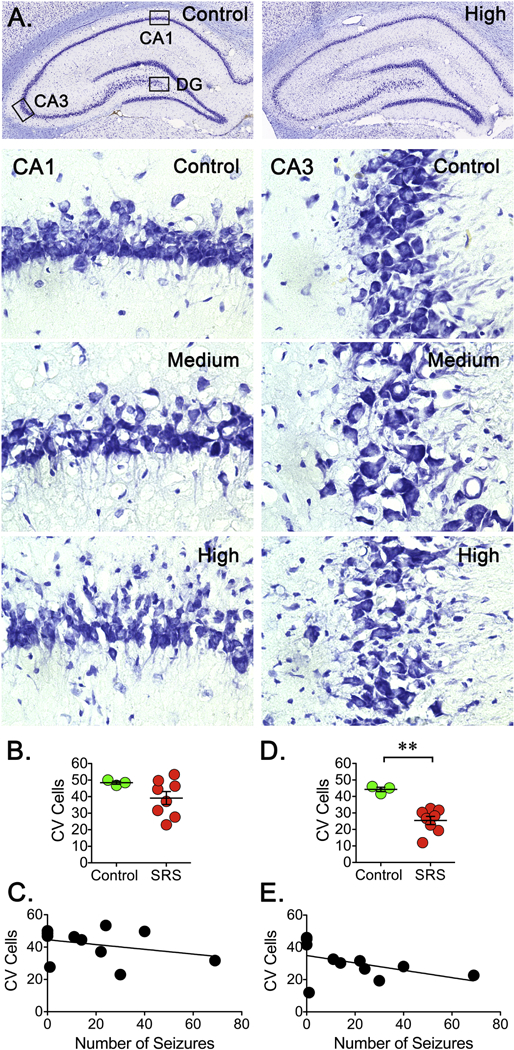Figure 6. Neuronal Loss After SRS.

Three coronal sections (15 μm) from a 1-in-10 series were stained using Cresyl Violet. A. Low magnification images (10X) were obtained and assembled to provide a view of the entire hippocampus. Images from a control and the rat enduring the highest number of SRS are presented. Principal neurons along the CA1, CA3 and DG layers are easily detectable in both control and epileptic animals. Representative Nissl stained brain sections (40X) showing the overall pattern of neuronal bodies in CA1 and CA3 regions of hippocampus. A reduction in number of cell bodies is apparent in the CA3 region of animals experiencing a higher number of SRS. (B, D) Cell bodies were counted on three brain sections and averaged to represent the number of cells in a particular rat. Cell counts were conducted blinded to seizure frequency. Data is presented as the mean ± SEM of controls (n=3) and animals experiencing SRS (n=8). In the CA1 region, counts revealed a non-significant downward trend but counts in the CA3 region showed a significant decrease. The number of cells was compared using an unpaired t-test, **p<0.01 represents a significant difference. (C, E) Values obtained for the number of stained cells were paired with the total number of SRS detected in a linear regression analysis (n=8). Despite a trend, plots did not show a significant correlation between the levels of stained cells and the number of SRS detected in the CA3 region.
